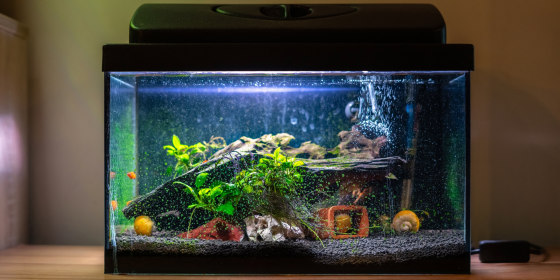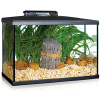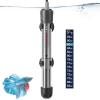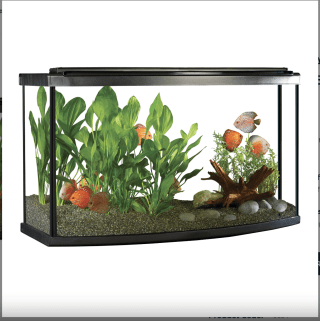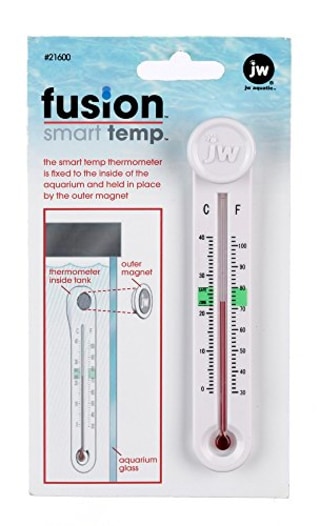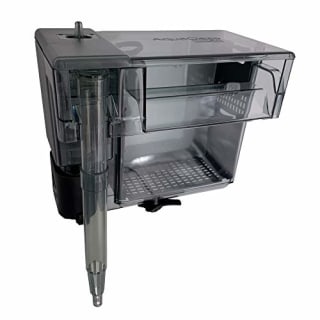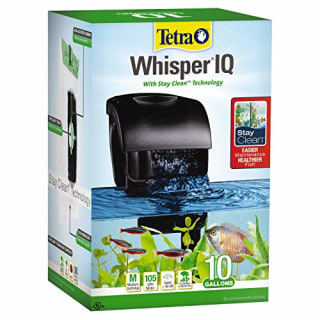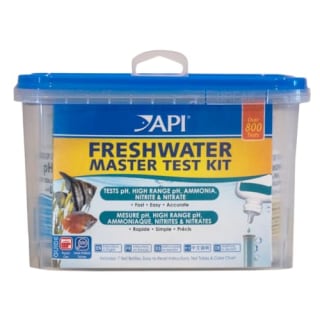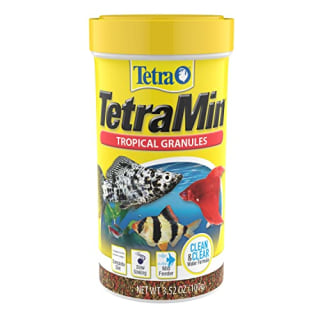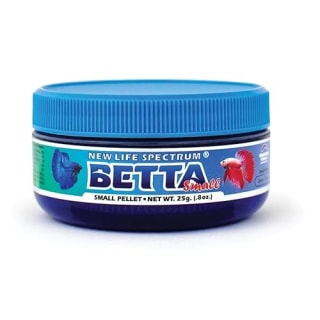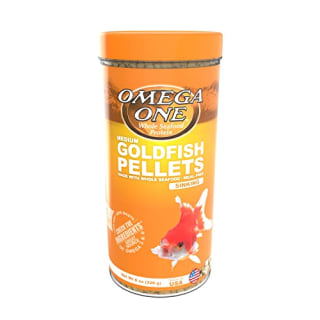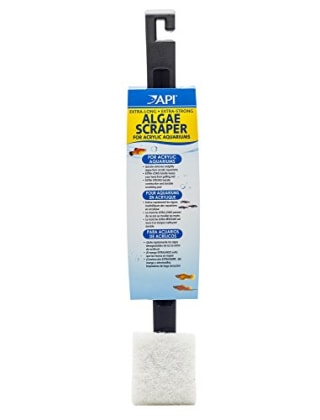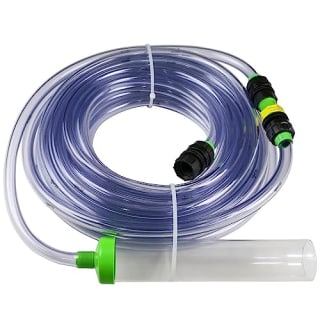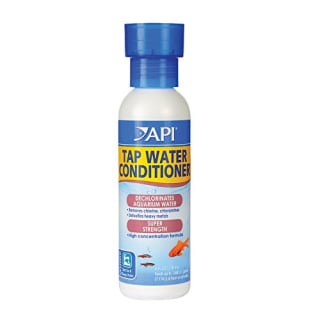Fish are often considered a low-maintenance pet option for children or busy adults. That’s not necessarily the truth, according to experts. “Pet fish require just as much work as any other pet,” says aquatic veterinarian Dr. Jessie Sanders, owner of Aquatic Veterinary Services in California. “They’re not ‘starter’ or ‘maintenance-free’ pets and require lots of hard work and care,” she says. Dr. Ben Rosenbloom, an aquatic vet and owner of Wet Pet Vet in New York City, agrees, saying that fish are not a light commitment, and shouldn’t be purchased on a whim.
If you want to start an aquarium of your own, I asked Sanders and Rosenbloom about everything you need for new pet fish, including product recommendations, aquarium setup tips and advice on day to day care.
SKIP AHEAD Fish tanks | Water safety | Fish food | Tank cleaning | Meet our experts | Why trust NBC Select?
Everything you need for a new pet fish
Below, our experts share their product recommendations and guidance for setting up all of your pet fish essentials, including fish tanks, water safety tools, food and more.
Fish tanks
Choosing a tank is the first step. The tank you choose depends on a couple of factors, especially the number of fish, and the size of each one. “Most people underestimate the size of tanks that fish require,” says Rosenbloom. Tanks are measured in gallons and different fish species require varying volumes of water to live comfortably in. According to Rosenbloom, common fish like goldfish should be in 40 gallon tanks since they require 10-20 gallons of water per fish, while smaller fish like bettas require 5 gallons or more per fish. While both Sanders and Rosenbloom say that fish tanks can vary greatly across makes and models, they both warn against using a fish bowl, which can’t accommodate the water safety tools needed to make the aquarium livable for your fish. “No fish should ever be kept in a bowl,” says Rosenbloom.
Best fish tank: Marina 19L LED Aquarium Kit
- LED lights included
- Comes with care guide
- Heater not included
This beginner-friendly fish tank has a slim, high-quality filter that uses quick-change cartridges, which means less hassle when it’s time to replace them, according to the brand. The aquarium also comes equipped with energy-efficient LED lights that create a daytime effect in the water, no matter where the tank is placed in your home. Since it’s a full kit, you’ll also get fish food, water conditioner, a fish net, and an aquarium care guide to help you start up your fish family. This tank, available in 5-gallon and 10-gallon sizes, is also highly rated, with a 4.4-star average rating from 2,357 reviews on Amazon.
Best large fish tank: Fluval 45G LED Aquarium Kit
- Heater included
- LED lights
- Shock-resistant
- Nothing to note at this time
This kit is great for both beginner and experienced fish owners. The fish tank is made from a durable, shock-resistant glass and comes with LED lights, which are great for aquariums with plants, and a filter with five stages of filtration, according to the brand. The kit also includes water treatments, fish food, a care guide, a net and a thermometer.
Best fish tank heater: Hitop Adjustable Aquarium Heater
- Adjustable settings
- Automatic power off/on
- Range of power levels
- Thicker than other heaters
If you plan on having tropical fish, experts say you’ll need a fish tank heater to maintain a water temperature that matches the fish’s natural environment. Sanders recommends this adjustable model, which ranges between 68 and 93 degrees Fahrenheit, according to the brand. You can adjust the heater to your desired temperature and it will keep the water within two degrees of that temperature by automatically shutting on or off when the water temperature changes, according to the brand. The heater is made from a durable, tempered glass and is available in a range of power levels for different sized tanks, including 25 watts, 100W and 300W.
Best fish tank thermometer: Smarttemp Thermometer
- High accuracy
- No suction cup needed
- Two in a pack
- Nothing to note at this time
To ensure that your heater is working properly, Sanders recommends this thermometer, which is both fresh- and saltwater-compatible, according to the brand (whether you use fresh or saltwater will depend on the fish you get). Each package comes with two magnetic thermometers that go on the outside of the tank. The thermometers are also labeled with a green “safe zone” to easily indicate the ideal temperature range.
Water safety
Best overall water filter: Aquaclear 50 Power Filter
- Different sizes available
- High-level filtration
- Easy to install
- Not adjustable
Both experts stress the importance of having a water filter to remove unwanted materials and toxins (“all fish tanks require filtration,” says Rosenbloom), and Sanders suggests this model for its high-quality, carbon-based filter filter that provides mechanical, chemical, and biological filtration of up to 50 gallons of water, according to the brand. The filter is designed in a waterfall-style that the brand says allows water to run into the tank silently and break the surface in a way that supports oxygenation in the tank, which is important for the health of your fish. It also has a warranty that covers any issues with materials or workmanship for up to two years after purchasing.
Best adjustable water filter: Tetra Whisper IQ Power Filter
- Good for betta fish
- Quiet technology
- Adjustable flow control
- May rattle if not secured
Sanders suggests this water filter for fish that may not be compatible with filters with a heavier flow, like bettas. “Betta fish can get tossed around by heavy water flow,” she says. “This is a better one for them with adjustable flow.” It has a sound shield that helps to minimize noise, and adjustable flow control and intake, so you can set the filter to fit your aquarium’s needs. Although this specific model is for 10-gallon tanks, this filter is available in sizes fitting tanks of up to 60 gallons.
Best water test kit: API Freshwater Master Test Kit
- Includes key parameters
- No test strips
- The version is freshwater only
According to Sanders, this all-in-one kit includes “all of the parameters you should be testing when it comes to your fish tank.” This kit monitors the key parameters of water safety for freshwater aquariums, including pH, ammonia, and nitrate levels, according to the brand. It comes with seven bottles of testing solution, four test tubes and a color card to help you understand your test results. Although this kit is designed for freshwater tanks, the brand also offers pond, reef and saltwater test kits.
Fish food
According to Sanders, the fish food you choose will vary by the species you keep. Contrary to popular belief, flake fish food is only suitable for baby fish that are less than six months old, says Sanders. Beyond this, she advises paying attention to the protein and fat levels in the food, which will vary depending on the adult size your fish needs to maintain, or whether they’re still growing or reproducing.
How often to feed your fish also depends on your fish and tank type, according to Sanders. “Feeding frequency will depend on your fishes’ water temperature,” she says. “Unless your water is less than 60 degrees Fahrenheit, your fish will need to eat at least daily.” She recommends feeding tropical and betta fish at least twice a day, and goldfish at least once. Food containers should be replaced every six months to ensure the vitamin levels are still adequate for your fish, says Sanders.
Best tropical fish food: Tetra Tetramin Tropical Granules
- Very digestible
- Doesn't cloud water
- Nothing to note at this time
Sanders recommends this fish food for tropical fish of all life stages. Tetra’s formulas use high-protein fish meal as a main ingredient, which allows the food to digest easily, resulting in less waste and a cleaner aquarium for your fish. The food is slow-sinking and bite-sized, to make it easier for the fish to eat, and is also fortified with Vitamin C, according to the brand.
Best betta fish food: New Life Spectrum Betta Small Pellets
- Small pellets
- Sinks slowly
- No artificial preservatives
- Best for smaller betta fish
This food, which is designed to enhance the color and general health of your betta fish, according to the brand, comes recommended by Sanders. It has no added hormones, artificial colors, or preservatives, and is formulated with garlic, which New Life Spectrum says helps the immune system of your fish. This food also contains aquatic proteins like squid and krill, along with natural nutritional sources like kelp and spirulina.
Best goldfish food: Omega One Goldfish Pellets
- Natural proteins
- Doesn't cloud water
- Sinks well
- Nothing to note at this time
Sanders recommends these pellets, which are made specifically for the sensitive digestive systems of goldfish, according to the brand. They’re formulated to be slow-sinking and contain plenty of Omega 3 & 6, which help to increase energy and immunity. The pellets also have a reduced level of starch, which decreases fish waste, according to the brand. For best feeding practices, Omega One recommends feeding your fish 1-3 times daily as needed, using only as much food as they can eat in two minutes.
Tank cleaning
Your fish’s health and happiness also depends on the cleanliness and composition of your tank. “The most important thing to clean in a fish tank is the water itself,” says Rosenbloom. Though there are many products that can help with this, like the algae scrubber, gravel siphon, and water conditioner I’ve listed below, he says the best way to achieve tank cleanliness is by regularly changing the tank water. “In most cases, we recommend a weekly water change of 20% of the total volume of the tank,” he says. He also adds that while cleaning, it’s important to wear gloves and wash your hands after any contact with the tank water.
Best algae scrubber: API Acrylic Aquarium Algae Scraper
- Extra-long handle
- Strong scrubber
- Has hook
- Not for glass tanks
This scraper, which Sanders recommends, removes algae, dirt and other debris from the walls and bottom of aquariums. It has an extra-long, 18-inch handle that helps keep your hands out of the water, and a durable scraper that can be used as often as needed, according to the brand. This scraper is designed specifically for acrylic tanks; the brand recommends rinsing the scrubbing pad with water before using, to prevent scratching while cleaning.
Best gravel siphon: Python No Spill Gravel Cleaner and Water Changer
- Easy to use
- Minimal spills
- Nothing to note at this time
Both experts suggest using a python siphon to help vacuum the substrate (which is the gravel, sand or plants that cover the bottom of your tank) and remove your fish’s waste. Sanders suggests this model, which is a dual gravel cleaner and water changer that attaches directly to your sink to easily drain and fill your tank during water changes, according to the brand. It comes with everything you need for the process — a hose, a gravel tube, hose connectors, a faucet pump, and even a faucet adapter, so it fits a variety of different sink models.
Best water conditioner: API Tap Water Conditioner
- Highly concentrated
- Detoxifies water
- Dosing depends on tank size
Water conditioners treat tap water to remove chemicals that are fine for humans and other pets, but may be harmful to your fish, including chlorine and chloramine, says Sanders. She suggests this option from API, which she says “does the simple job the right way.” It has a high-concentration formula that neutralizes chemicals and other contaminants that can lead to gill and tissue irritation on your fish, according to the brand. API recommends using it when adding or changing water, or when adding new fish to your aquarium.
Meet our experts
At NBC Select, we work with experts who have specialized knowledge and authority based on relevant training and/or experience. We also take steps to ensure all expert advice and recommendations are made independently and without undisclosed financial conflicts of interest.
- Dr. Jessie Sanders is an aquatic veterinarian and the owner of Aquatic Veterinary Services in California.
- Dr. Ben Rosenbloom is an aquatic veterinarian and the owner of Wet Pet Vet in New York City
Why trust NBC Select?
I am an associate SEO reporter at NBC Select, covering topics in skin care, wellness and lifestyle like the best pet-safe plants. For this article, I interviewed aquatic veterinarians about their tips, advice and product recommendations for new pet fish owners.
Catch up on NBC Select’s in-depth coverage of tech and tools, wellness and more, and follow us on Facebook, Instagram, Twitter and TikTok to stay up to date.
